Silver price prediction 2025 suggests it may smash past historical peaks
Silver price prediction 2025 suggests it may smash past historical peaks
Silver price prediction 2025 suggests it may smash past historical peaks
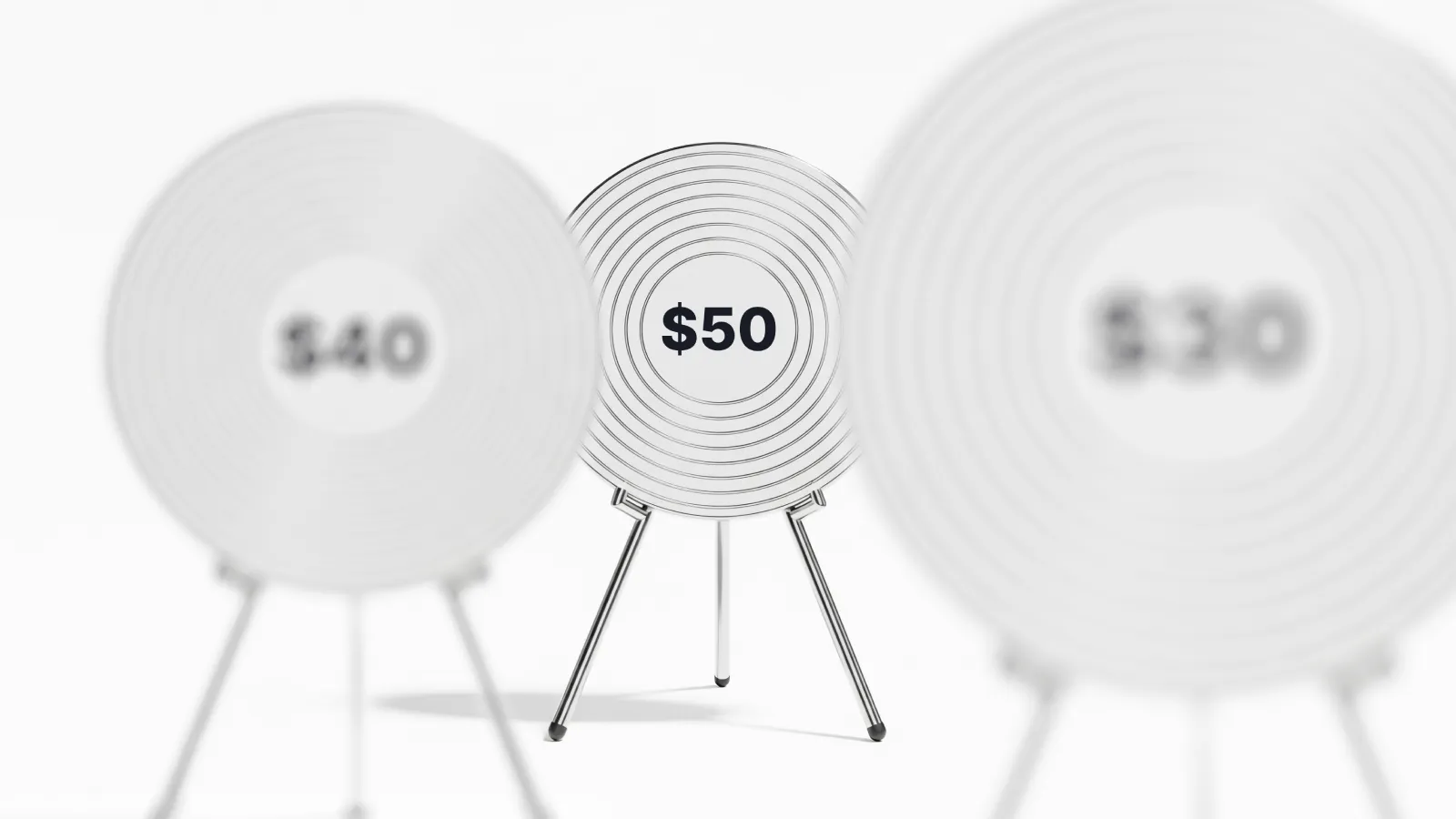
Silver looks set to challenge - and potentially exceed - its 1980 and 2011 highs as it edges toward $50 in 2025, according to analysts. The latest silver price forecast indicates the conditions are firmly in place: the metal is already up 55% this year, rising from $29 in January to nearly $47 by September, its strongest quarterly finish on record. The push is being fuelled by safe-haven buying, Federal Reserve policy shifts, chronic supply deficits, and booming industrial use in solar technology and electric vehicles.
With global demand projected to outstrip supply by more than 100 million ounces next year and silver ETF holdings in 2025 close to historic levels, $50 no longer looks like a ceiling but the next stage in price discovery.
Key takeaways
- Silver has climbed 55% year-to-date, beating gold’s performance in relative terms.
- Rate cuts and a weaker dollar are boosting the appeal of non-yielding assets like silver.
- The silver industrial demand forecast stays above 700 Moz, thanks to solar, EVs, and electronics.
- Output remains short: global production (~844 Moz) lags demand, leaving a 100 Moz+ deficit for a fifth consecutive year.
- Silver ETF holdings 2025 and wider ETP inflows rose 95 Moz in H1 to 1.13 billion ounces.
- Volatility hedges are climbing: net dealer long VIX positions at 87,000 contracts, with $VXX assets up 312% YoY.
- Risks include speculative equity trading pulling flows away from metals, alongside profit-taking dips.
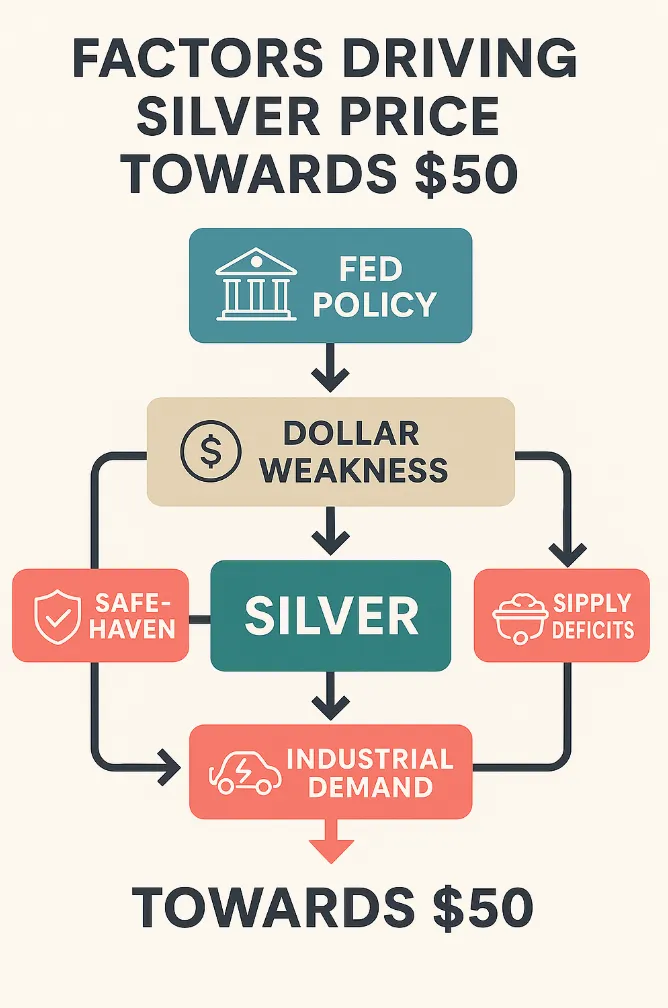
Silver safe-haven demand: Political risk analysis
Investor appetite for silver has been reinforced by political risks in the U.S. Ahead of 30 September, fears of a government shutdown sparked flows into both gold and silver. Even though the shutdown didn’t materialise, the fear factor alone lifted demand.
Geopolitical flashpoints, including the war in Ukraine and ongoing tensions in the Middle East, continue to add to silver’s safe-haven appeal alongside gold.
Federal Reserve policy and the dollar backdrop
The U.S. Federal Reserve has shifted gears. September’s 25-basis-point cut - its first in years - set the stage for another move, with markets pricing in a 94.6% probability of a second cut in October.
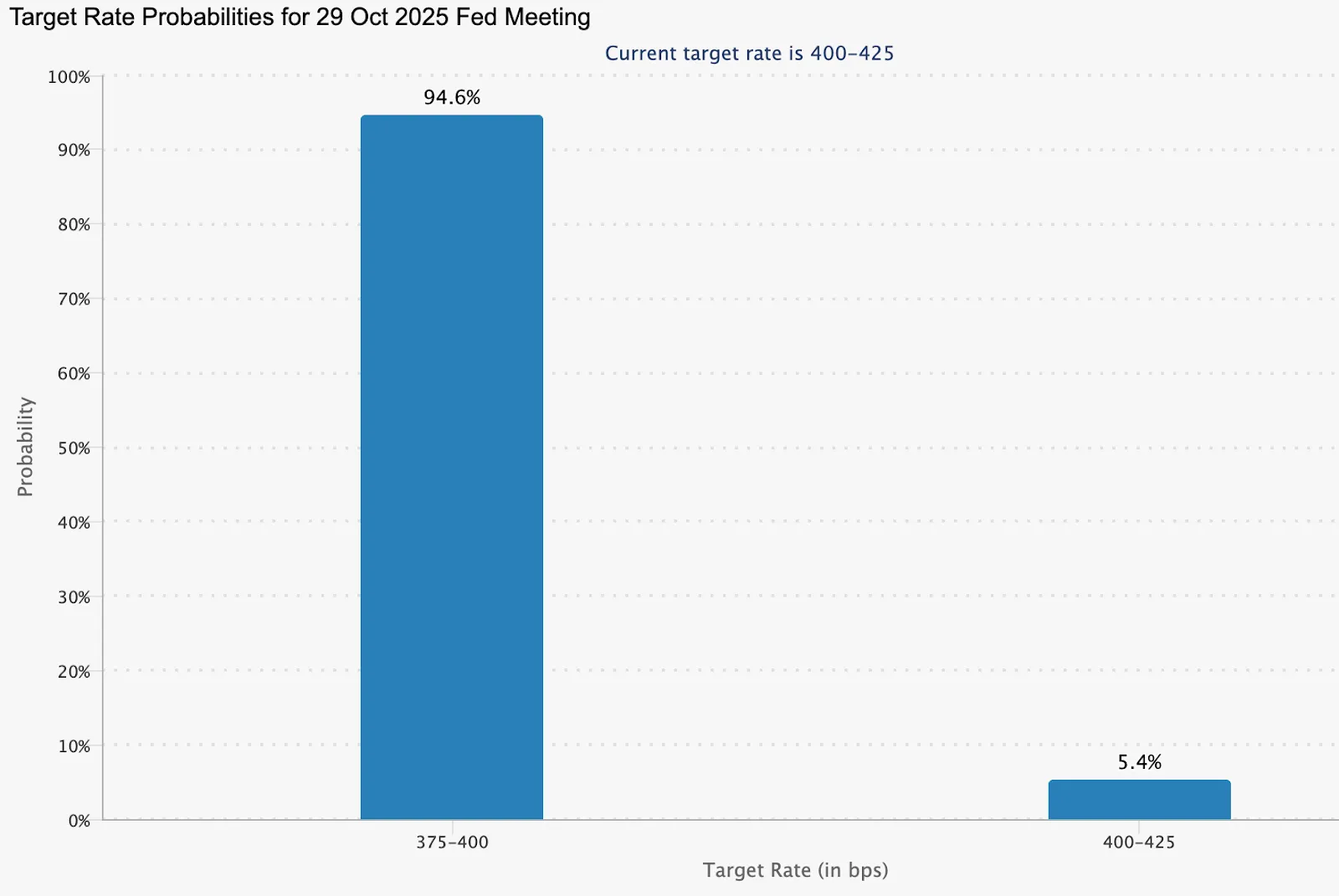
Persistently high PCE inflation strengthens the case for easing further after the first cut of 2025. Lower rates cut the cost of holding bullion, while dollar weakness makes silver more attractive to international buyers. Both dynamics have been pivotal in powering silver’s rally through 2025.
Industrial demand is driving structural growth
Silver’s appeal isn’t just as a safe-haven. The silver industrial demand forecast points to consumption above 700 Moz this year, underpinned by three key sectors:
- Solar energy: Silver’s conductivity makes it vital for photovoltaic cells.
- Electric vehicles: EVs consume significantly more silver than conventional cars.
- Electronics: Both consumer devices and industrial applications continue to drive usage.
This clean-energy transformation anchors silver’s role as a growth commodity, giving the rally structural support regardless of short-term market shifts.
Silver metal industry’s supply deficit
Supply isn’t keeping pace. Global production is expected to reach about 844 Moz in 2025 - far short of demand. Since around 70% of silver is produced as a byproduct of base metals, mining output doesn’t automatically scale up with silver prices.
Long-term issues like declining ore grades, regulatory red tape, and investment slowdowns add further strain. For the fifth year running, the Silver Institute forecasts demand to surpass supply by more than 100 Moz. This entrenched imbalance underpins the longer-term bullish narrative.
Silver investment outlook: Investor flows and market sentiment
Investor activity is amplifying silver’s momentum. Silver-backed ETPs gained 95 Moz in H1 2025, lifting global totals to 1.13 billion ounces - near record highs. Within this, silver ETF holdings 2025 stand out as a key driver of investor enthusiasm.
Silver ETFs have returned 54% YTD, attracting momentum-driven participation. India’s retail demand rose 7% year-on-year, and European markets are recovering.
Meanwhile, volatility products show surging interest:
- Net dealer long VIX positions hit 87,000 contracts.
- $VXX assets climbed 312% YoY to nearly $1 billion.
- Leveraged $UVIX posted 215% inflows.
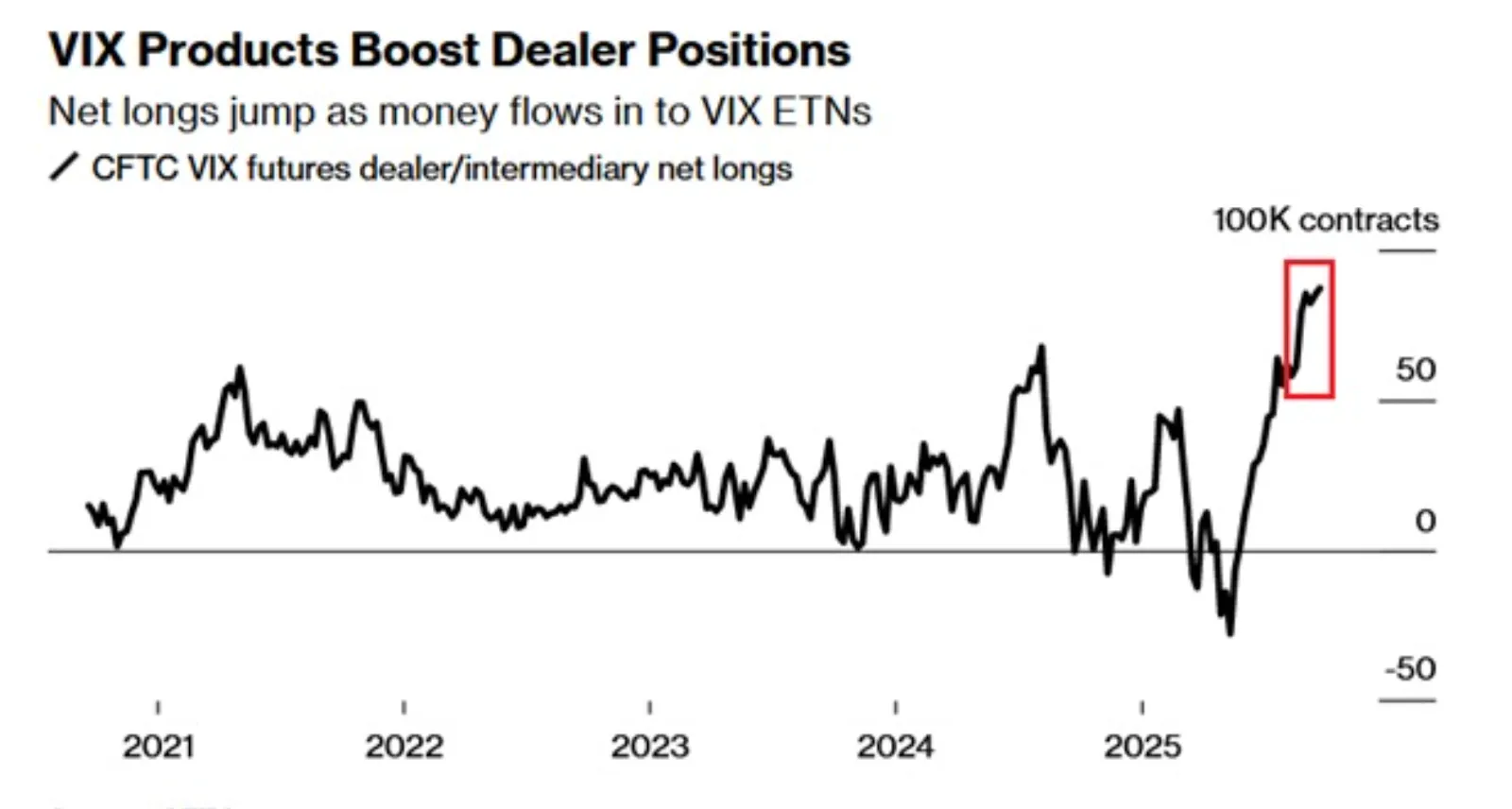
This rising caution usually favours safe-haven metals like silver.
Short-term risks: Retail frenzy and corrections
Despite the positive backdrop, risks remain. U.S. retail traders have driven call-option volumes to a record 9 million contracts (five-day average) - almost double puts and triple 2020 levels.
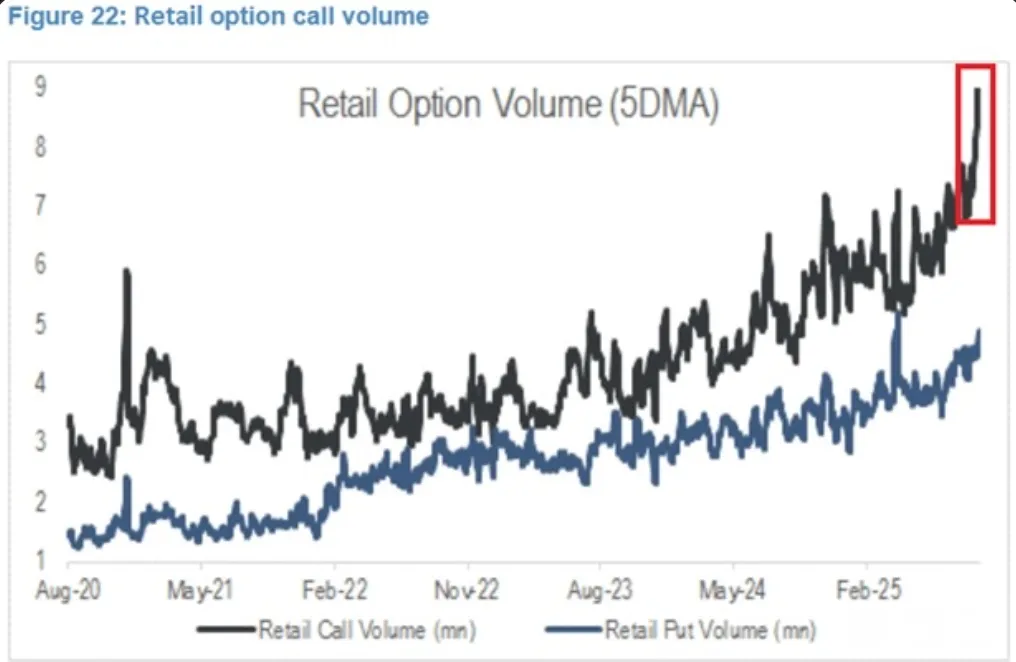
This speculative activity could divert capital from metals. Analysts caution that while silver may dip on profit-taking, such moves are technical pauses, not reversals of the bigger trend.
Silver technical analysis
Silver is in price discovery mode, retesting levels last seen in 2011. That said, volume data shows strong selling pressure, which could slow momentum. If buyers fail to push higher, prices could consolidate, with support levels around $44, then $40.73 and $37.45.
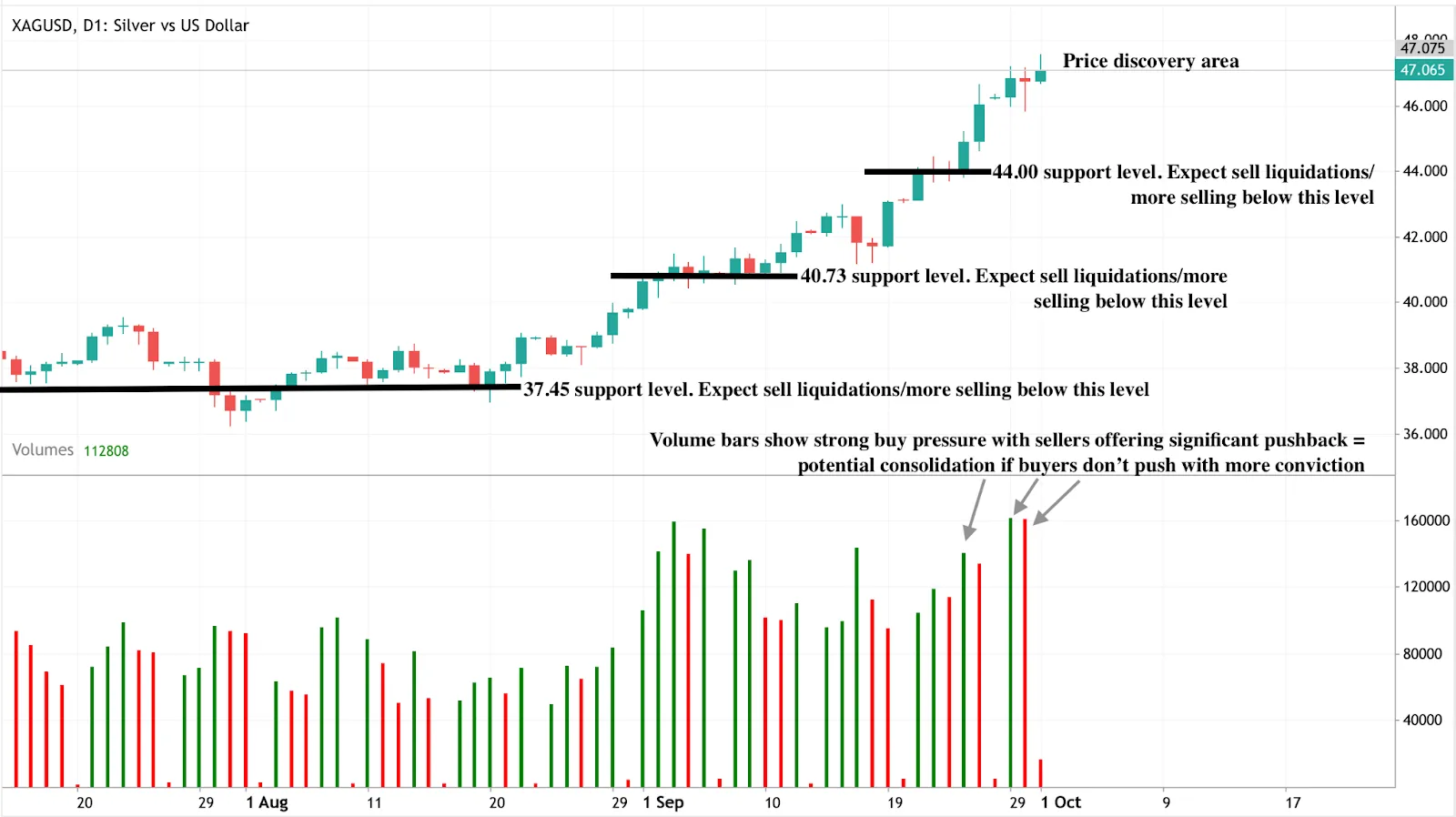
Trading Silver’s approach to $50
As silver tests the $50 mark, different traders view the move through their own lenses. These approaches are shared for educational purposes only:
- Short-term traders look for sharp swings near $47–$48. Stop-loss and trailing stops are common risk tools. On Deriv MT5, silver is available as XAGUSD CFDs with flexible contract sizes.
- Medium-term traders watch trend signals like higher lows. Scaling into positions reduces exposure risk.
- Long-term investors may accumulate gradually, using dips as entry points and balancing silver with other commodities. On Deriv Trader, silver is offered via commodity- and ETF-inspired products, with a demo mode to practise.
- Universal step: Many traders test strategies in demo accounts first, given silver’s sharp volatility.
Investment implications
Silver’s story in 2025 is one of scarcity and dual demand:
- Short-term: Expect turbulence around the $50 barrier. Pullbacks are likely, but the fundamental backdrop remains supportive.
- Medium-term: Structural deficits and industrial demand suggest silver could break through $50 and sustain higher ground.
- Market impact: Silver miners benefit from high prices, while industrial users face higher costs. Traders should prepare for volatility with an upward bias.
Disclaimer: The performance figures quoted are not a guarantee of future performance.















